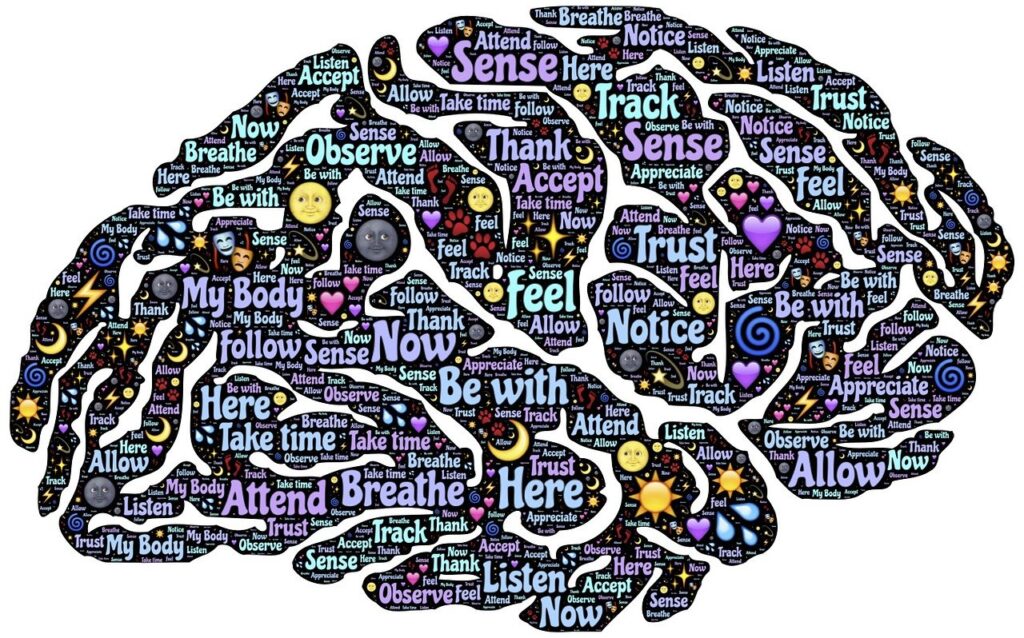Have you ever experienced a challenging event that continues to impact your daily life, despite your efforts to move forward? If so, you’re not alone. Challenging experiences can leave a lasting mark, manifesting in various emotional and cognitive difficulties. However, there’s hope in an approach using what is commonly referred to as simply Eye Movement Techniques or Eye Movement Integration Technique (EMIT) which have developed out of the NeuroLinguistic Programming (NLP) principles and studies. In this article, we’ll delve into the principles of EMIT, exploring how it works and its potential benefits in alleviating the emotional burden of past and present challenges. Additionally, we’ll discuss the main differences between EMIT and EMDR, how EMIT affects various brain regions, and why memories may fail to undergo the typical codification process.
Understanding NLP and EMI
To comprehend EMIT, it’s essential to first grasp the foundation of Neuro-Linguistic Programming (NLP). NLP posits that different eye movements access distinct sensory systems, activating specific areas of the brain. Building upon this theory, Eye Movement Integration (EMI) suggests that these challenging experiences persist because they are compartmentalized both neurologically and cognitively. This fragmentation prevents the complete integration of the experience into one’s life.

Principles of Eye Movement Integration
At the core of EMIT lies the principle that full integration of the memory and related belief requires engagement with all relevant multi-sensory dimensions. This entails accessing not only the visual aspects of the experience but also its emotional and cognitive components. Through guided eye movements, EMI aims to establish new connections among these different types of sensory information. By doing so, it facilitates the integration of the specific thought or memory into the individual’s broader life narrative.
The Process of Eye Movement Integration
During an EMIT session, the individual is guided through a series of eye movements while recalling an experience or limiting belief. These eye movements correspond to the various sensory systems involved in the memory. As the individual engages with the memory and follows the eye movement instructions, new connections are forged among different aspects of the experience. Over time, this process leads to a reduction in the emotional intensity associated with the memory, thereby alleviating potential distress and unwanted experiences it may cause.
Benefits of Eye Movement Integration
One of the primary benefits of EMIT is its ability to diminish the emotional charge of negative thought processes/memories without having to erasing them entirely. This allows individuals to retain the wisdom and lessons gained from their experiences while freeing themselves from the burden of intense emotional distress. Additionally, EMIT can empower individuals to regain control over their lives and move forward with greater resilience and emotional well-being.

Differences and Similarities Between EMDR and EMIT
The Differences:
While Eye Movement Integration (EMI) and Eye Movement Desensitization and Reprocessing (EMDR) share some similarities, such as the use of eye movements and attention to multi-sensory manifestations of distress, there are notable differences between the two approaches.
The Similarities:
Both EMI and EMDR emphasize the importance of thorough understanding the client and the issue(s) presenting before any eye movement exercise is initiated. Additionally, both techniques require the practitioner to undergo specific training and workshops to ensure proper implementation. Furthermore, both methods have demonstrated the capacity to access the subconscious connections to the memory, feeling, and belief.
While both EMDR (Eye Movement Desensitization and Reprocessing) and EMIT utilize an eye movement process and both came out of NLP principles and theory, there are notable differences between the two approaches. EMDR primarily focuses on desensitizing the emotional intensity of traumatic memories through bilateral stimulation, while EMIT aims to integrate challenging experiences into one’s life narrative by engaging with all relevant sensory dimensions.
Nature of Eye Movements: EMDR primarily utilizes rapid lateral saccades similar to rapid eye movement (REM), while EMI incorporates more smooth pursuit eye movements (SPEM) in multiple directions and patterns. In EMI, the speed and range of eye movements are generally slower and tailored to the client’s preference, whereas EMDR employs rapid eye movements within the client’s tolerance.
Pattern Variability: EMI utilizes 22 to 29 different eye movement patterns, whereas EMDR typically maintains the same pattern until no more change is observed in the client’s responses before switching to a different direction.
Protocol Differences: During and between segments, EMDR follows whatever emerges from each segment, whereas EMI encourages the client to remain focused on the main target throughout the session.
- Underlying Premise: In EMI, the use of eye movements is based on the presupposition of NLP, which suggests that inner representations of experiences can be accessed via eye movement cues, allowing the practitioner to guide the client’s gaze to specific quadrants of the visual field to integrate various thoughts and beliefs and specific challenging material. In contrast, EMDR does not indicate a connection between the range and direction of eye movements and the nature of the material being processed.
Despite these differences, both EMI and EMDR offer effective approaches to integration technique for specific types of memories in an ecologically sound manner, highlighting the potential of eye movement techniques in various scopes of practice.

Effects on Brain Regions
EMIT affects various brain regions involved in memory processing and emotional regulation. By engaging with different sensory systems, EMIT promotes the formation of new neural connections and modifies existing ones. This process leads to a reorganization of neural networks, resulting in reduced emotional distress and improved coping mechanisms.
Memory Codification and Integration
Typically, memories are codified through a complex process involving various brain regions. However, when a memory fails to undergo this process, it remains unintegrated and isolated, leading to persistent distress. EMIT addresses this issue by facilitating the integration of challenging experiences into the individual’s broader life narrative, promoting emotional healing and resilience.
The Wrap Up….
These Eye Movement Integration Techniques offer a promising approach to an individuals personal development and growth process, emotional freedom, and goal achievement. When we experience healing and growth from our past we find we can reclaim a sense of peace and wholeness. If you’re struggling with issues such as fears, anxiety, negative thought loops, and limiting beliefs you may be interested in exploring EMIT as a pathway towards greater emotional freedom and well-being.

